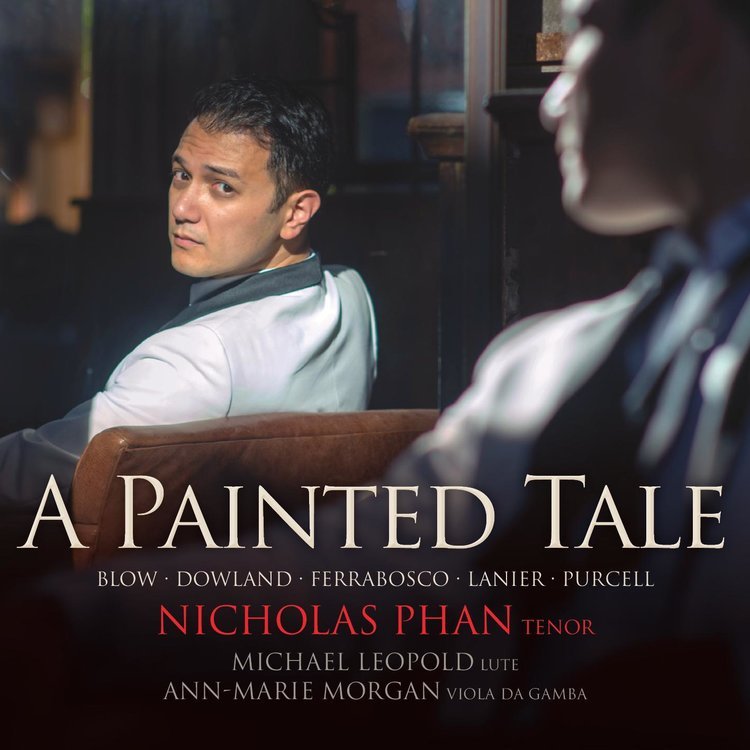A PAINTED TALE (Signed CD)
A PAINTED TALE (Signed CD)
Purchase a physical copy (CD) of “A Painted Tale” signed by Nick
About A PAINTED TALE
My first exposure to early English song was as a teenager during my third summer as a camper at the prestigious Interlochen Arts Camp, where many a young musician, actor and artist has made many important discoveries about life and art over the years. During my third summer at the camp, I made a very important shift musically: rather than attend the camp as a violinist, as I had the previous two summers, I applied for and was successfully admitted into the camp’s rigorous musical theatre program, having been bitten by the drama bug the previous year. It was during these summer weeks of studying musical theatre in northern Michigan that I decided to become a classical singer, and leave behind my childhood dreams of playing in one of the world’s great orchestras.
One of the joys about being a camper at Interlochen in those days was that, regardless of your primary focus, or major (as the camp referred to it), students were also expected to take elective courses. Not wanting to abandon my instrumental background completely just yet, and curious about ‘early music’ after having sung a few Italian and English madrigals with my school choir, I elected to enrol in Interlochen’s Early Music course.
On the first day of class, after making it known that I was both a violinist and (now) a singer, the teachers decided that it would be best for me to study the viola da gamba. After hearing me sing a bit, one of the teachers, Ann Marie Morgan (who is also the violist da gamba on this recording), handed me a song by John Dowland, Flow My Tears. For this one and only project of the summer, Ann Marie asked me to sing with the class’s newly formed viol consort. After our first reading of the song, I was hooked. I’ve dreamt of putting together a program of early English songs ever since.
When thinking about this project, I found that I was confronted with one primary challenge: how to pick which songs to perform, as there are so many precious gems from which to choose. Sifting through the seemingly endless treasure trove of songs, it occurred to me that it might be possible to assemble a selection of them into a sort of pastiche song cycle, structuring them in an order that creates an imagined storyline that links them together. Taking Schubert’s Die schöne Müllerin as a model, the songs on this album are ordered so that they tell a story, a so-called ‘Painted Tale’ of a young man who falls in love with a young woman, and is destroyed by the heartbreak that ensues, choosing death as the only possible escape from his torment.
It was not hard to find songs that fit into this storyline, and the draw towards Schubert’s first epic song cycle as a model was a natural one. Much of the English Renaissance melancholia that was in style when these songs were composed (John Dowland’s motto was Semper Dowland, semper dolens or ‘always Dowland, always doleful’, after all) has many parallels with the German Romantics’ idolatry of the unrequited lover-hero whose unbearable pain from heartbreak causes him to turn to suicide in the model of Goethe’s tragic Werther, or Schubert and Wilhelm Müller’s young journeyman miller of Die schöne Müllerin. On top of this, I found that the object of many of these poets’ affections was coincidentally named ‘Celia’ – only in one instance have we had to change a ‘Sylvia’ to ‘Celia’ in order to keep our story cohesive.
What has drawn me so powerfully to sing this repertoire since I first encountered it in my teenage summer music camp days is its timelessness. Reading the poetry in these songs, I am fascinated by how little the human experience has changed over the centuries. By assembling these pieces into what I’m calling ‘a pastiche song cycle,’ I hope that creating a dramatic context for them will highlight how relevant they still are today.
